The complete guide to cold calling vs warm calling
It’s undeniable that life for the average person has become busier and more multifaceted than ever before. Technological advancements have enabled our lives to become more complex in a positive way. The average person has way more going on in and outside of work, and this also has an impact on how they perceive information.
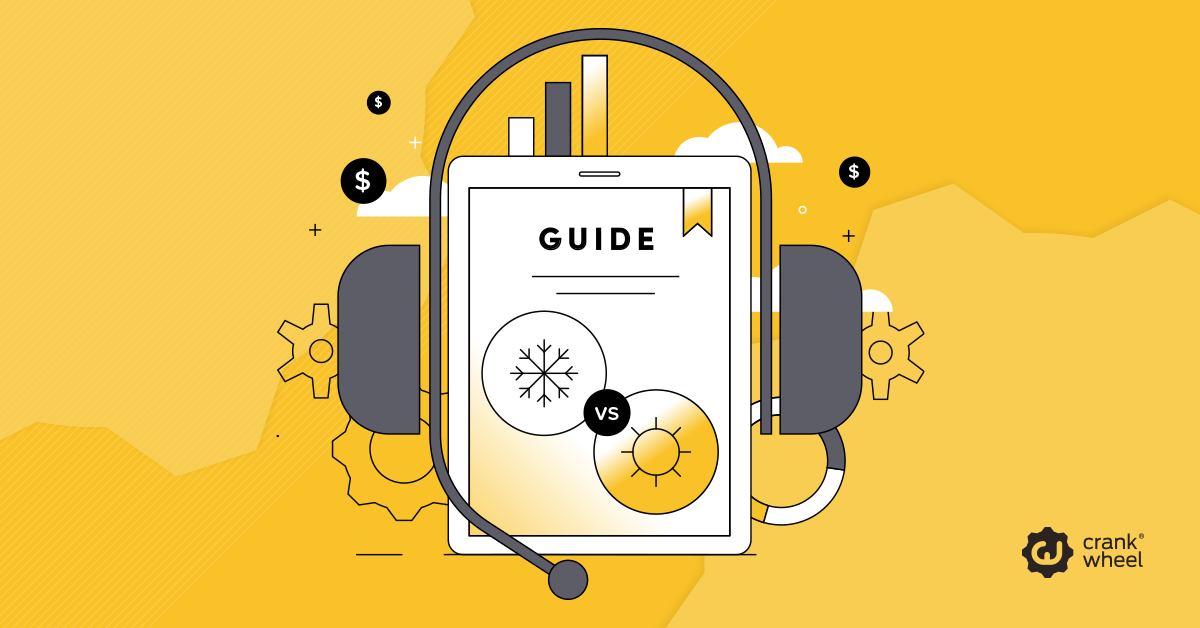
From Facebook to Instagram, to even TikTok, the way people digest the news, information, products, and services have never been more specific than it is now.
Most people have a news feed that contains carefully curated information that has been selected and pushed to them depending on their likes, dislikes and interests across a multitude of internet platforms.

The average person is bombarded with information, products and sales pitches from the moment they wake up to the moment they lay in bed scrolling their news feed instead of sleeping. When it comes to the way people digest information in the modern world, it’s important to understand how it’s changed their reachability as potential customers and consumers.
In relation to sales and the methods of reaching potential customers, it’s important to look at how customer needs have evolved in the past century and what trends might need to be avoided.
So, where does this leave cold calling? What is the alternative, and why should the method in which customers are contacted be viewed as important?
Read on to find out all you need to know in this complete guide to cold calling vs warm calling.
Shortcuts:
- What is Cold Calling?
- What is Warm Calling?
- What Are the Main Problems With Cold Calling?
- What Are the Main Differences Between Cold Calling and Warm Calling?
- The Most Important Warm Calling Tips
- Tactics to Engage Leads Before a Warm Call
- How Can CrankWheel Help You Convert Leads?
What is Cold Calling?

Cold calling is where a salesperson uses a telephone to connect with a potential customer, but in this situation, the customer hasn’t (to their knowledge) expressed an interest in purchasing or using the product or service that the salesperson is calling in relation to.
There is no need or connection tying them to the call.
To put it in the most simple terms, cold calling is like dialing random numbers and then trying to convince the person who answers that they should consider buying a product or using a service.
Called calling is one of the oldest forms of telemarketing and is actually much older than most people think.
The first mention of cold calling was way back in 1873, which was actually three years before the patent of the telephone by Alexander Graham Bell.
In the original 1873 document, sales guru and founder of the NCR Corporation John Patterson mainly talked about face-to-face canvassing of potential clients, but the principles of cold calling haven’t actually changed that much in over 150 years.
What is Warm Calling?

Warm calling gets its name from the fact that the potential client or customer has been metaphorically ‘warmed up’ before they receive the sales call.
Typically in warm calling, the person being called has already expressed an interest in a particular product or service, and there is definite proof of this interest.
It might seem a bit obvious, but warm calling generally tends to yield better sales results simply because the person on the other end of the phone has already thought about financially committing to something, so the sales person involved only needs to convince them that this commitment is the right thing to do.
What Are the Main Problems With Cold Calling?

The obvious problem with cold calling is that it almost seems like a random game of numbers. In many cases, it doesn’t really seem like it would provide better sales outcomes than just setting up a stall in a busy area and just hoping that enough people will walk by that just might be interested in a product or service.
There are, however, more specific problems with cold calling.
Most C-Level Contacts Won’t Respond

Although persistence is generally what provides results in cold-calling, it doesn’t really get the attention of decision-makers when it comes to B2B business strategies.
It can be the easiest way to attempt to engage with the most qualified prospects in the business landscape, but studies have shown it doesn’t really ever get the attention of those that count.
Depending on the product or service, it’s generally understood that up to 90% of C-level executives will never take or respond to cold calling. This can be a real buzzkill if you consider that the majority of new products or services implemented into businesses are usually decided on by the exact people who simply won’t answer the phone unless the person or company calling has a pre-existing relationship with them.
Large Call Volumes Required to Generate a Lead

The allure of cold calling is that it doesn’t take much preparation to get started. The only thing salespeople really need is a list of phone numbers, and then they just work through them, hoping their skills land a sale.
The main problem with this is that it’s actually not the most cost-effective sales tactic available. In most cold-calling situations, it takes almost 210 calls to generate even the slightest piece of interest. This could be a meeting, appointment, or direct sale, but it doesn’t necessarily result in income for a company.
It’s An Unenjoyable Job

Most sales experts agree that anyone who claims they love cold calling is probably a great salesperson because they are definitely lying. More than 63% of salespeople claim that cold calling is the part of their job they dread the most.
It Can Lead to High Staff Turnover Rates

Now more than ever, employee satisfaction is becoming a defining factor in the success of companies. In the wake of the Great Resignation, many businesses are looking at what they can do to retain staff and lower their turnover. High turnover generally doesn’t look good and usually scares off the best talent suited for the job.
Businesses that push salespeople into cold calling not only face the fact that it’s usually the least enjoyable part of the job, but it also makes way for a potential mismatch in the expectations of sales managers, sales representatives and sales prospects.
What Are the Main Differences Between Cold Calling and Warm Calling?

Both cold calling and warm calling involve using a telephone to make communication with a potential customer or client, but they are remarkably different.
As mentioned above, the major difference between the two is that with warm calling, the potential customer has already expressed interest before being contacted.
This interest could mean that they have liked a post on LinkedIn, attended a conference, filled out a feedback form or engaged with paid advertising content.
It doesn’t really matter how they have previous engagement; what matters is that they have expressed some form of interest in knowing more about a product or service.
There are a few ways in which the difference between cold calling and warm calling can dramatically affect sales results.
Customer Expectations

This is probably the most significant and obvious difference between cold calling and warm calling in the telemarketing process. Customer expectations help salespeople to navigate their needs within a sales conversation.
There’s a big difference in expectation from a customer when a salesperson is calling in relation to a matter that they have already engaged with as opposed to just randomly receiving a phone call.
In fact, a recent study showed that 8 out of 10 people won’t answer the phone if they don’t recognise the number, so in this case, warm calling certainly seems to yield better results.
Volume of Customer Contact

Cold calling is simply not that cost-effective, just based on the amount of sales hours required before a sale is actually made.
Yes, the principle of cold calling is based on making connections, assessing the likelihood of a sale and either closing it or moving on, but when there’s no reason for calling in the first case, the hours staff must commit to searching for even a hint of a convertible sale can start piling up.
Prior Engagements With the Lead

Every salesperson knows that if the answer to, ‘Have I got you at a good time?’ is ‘Yes,’ then there’s a good possibility that a lead might become a sale.
Most of the time, in telemarketing, the feeling of an established relationship can dramatically increase the chances of a lead becoming a sale.
Even if the potential lead has only had the most rudimentary contact with a company, the sheer fact that the engagement has been established will automatically rate the company higher in the mind of the potential lead.
Cold calling misses this altogether. Each lead is a new person from a list of other new people.
Sourcing of Customer Details

One of the other significant differences between cold calling and warm calling is that with warm calling, there is a chance to expand on the idea of a customer and fill in the blanks with real information that might help companies to assess their future customers and target markets.
This is about getting to know ‘Who exactly are the people who want to buy a certain product or pay for a particular service?’ The metrics that can be obtained from established relationships with customers are invaluable and only possible with warm calling.
The Most Important Warm Calling Tips

By this point, it’s pretty well established that warm calling tends to yield better results in a telemarketing framework, but are there some do’s and don’ts? Yes, check out the following handy hints to get the most out of warm calling.
Don’t Call the Same Person Over and Over
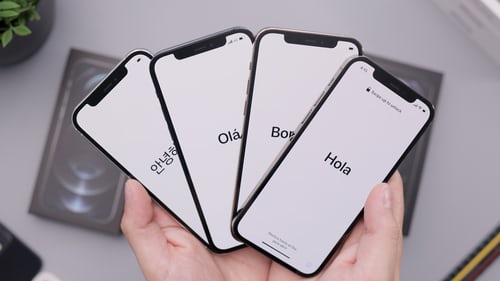
In most cases, calling the same potential customer over and over again will only annoy them and associate that annoyance with the brand that you are associated with.
Always remember that if a customer is generally satisfied with a service or product they have been provided, they will most likely be interested in hearing more in the future.
It might be tempting to strike now, ‘while the iron is hot,’ but there is more value in taking the time to learn about the customer and build a bit of a profile about them.
They may have said yes to a product, but instead of selling something else straight away, some more investigation might reveal that they are actually interested in a whole range of products.
Add space between calls and use calls as a way to get more information rather than just pushing another product on them.
Call First Thing in the Morning or Last at Night

There are better times to call potential customers, and knowing this can help to make sure the person on the other end of the phone stays in a good mood.
With warm calling, it’s much easier to establish a relationship with a customer, so there’s no problem with asking them when it is ok to call them back and making a note of it.
Because of their work schedules, some people don’t mind having a chat on the phone late at night before they go to bed; they just need to be given the option.
The point is to find a time that is convenient for them and try to accommodate it. The main point is to make sure the customer hears that you understand that their time is valuable.
Ask For Permission to Leave a Voice Message

Any prospect will appreciate it if they have been asked permission to leave voicemails. It’s a great sign of respect that will benefit a salesperson in the long run.
If a salesperson leaves a voice message without expressly receiving permission to do so, they will most likely annoy a potential lead.
When leaving a message, it’s also important to try to sound as human as possible. Don’t leave a message that sounds like a rehearsed reading of something scripted. Make sure there are pauses that naturally occur and that the voice sounds neutral.
Always mention the reason for the call in a voicemail and make it very clear how they can find more information if they need it.
Email Them With Your Contact Information and a Link to your Website
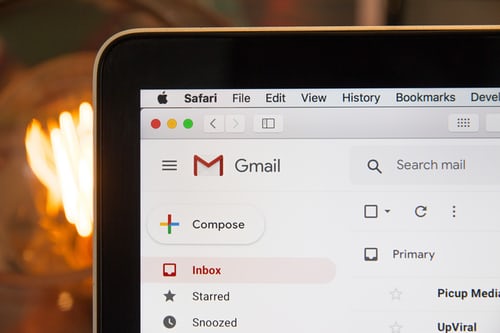
One hurdle telemarketers often face is that sometimes prospects aren’t really sure about giving out their contact information.
One great tactic to deal with this is to take the time to give them your contact information. If they’re not sure they want to give you their info, give them everything they could need to get in touch with you.
This does two things: it gives them the means to communicate with you and shows that you are sincere.
Discover Their ‘Pain Point’ So You Can Offer a Solution

Finding a ‘Pain Point’ is one of the golden rules of selling. A ‘Pain Point’ is basically an area of a potential customer’s life that would be improved by a product or service.
This is the kind of question commercials are trying to stir up in customers when they say things like ‘Wouldn’t it be great if…’ or ‘There’s gotta be a better way!’
Finding a pain point is basically a chance to offer a solution that they weren’t aware you could offer them. If a customer isn’t interested, there’s no harm in asking them if you can let them know in the future if a better product or price becomes available. This can help you to be persistent without being too pushy.
Tactics to Engage Leads Before a Warm Call

It doesn’t have to be difficult to make sure that potential prospects are warmed up before calling them. Here are a few ways to make sure that contact has already been made before the first call and that, as a salesperson, you start on the right foot.
Engaging Key Decision Makers With ABM Campaigns

Using Account-Based Marketing (ABM) campaigns can be a key factor in success when dealing with high-level decision-makers.
Account-Based Marketing aims at specific strategic accounts and makes the sales process more personalised to help close the sale quickly. It’s typically used by larger firms because it can be quite heavy in resources.
The reason ABM works so well is that it is a literal example of putting in the work and getting to know a customer before trying to make the sale.
Expending resources on ABM campaigns in situations where the prospect is a key decision-maker can yield some impressive results.
Try Building a Relationship Through Social Media Beforehand
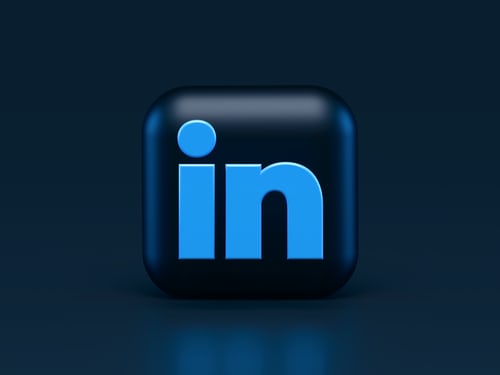
Building a relationship with customers through social media can create a method of engagement that feels more organic and casual and, therefore, prime potential sales for closing.
Social selling is basically a way of using a brand or product’s social channels to help nurture sales relationships, and many companies are experiencing promising results with this.
Up to 78% of salespeople who are engaged in social selling are generally outselling their peers, and it makes sense; most people spend a large chunk of their day on social media, so using it in an engaging way to sell speaks to the sensibilities of what potential customers are already used to.
T
Try Reaching Out With an Initial Cold Email
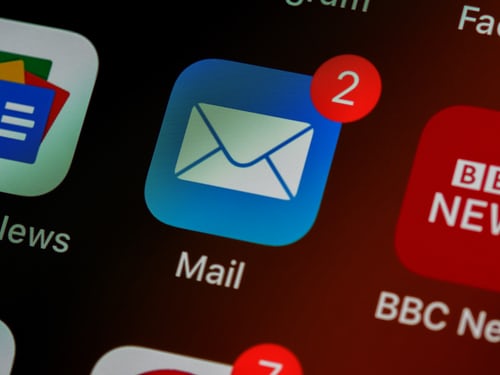
Reaching out with an initial cold email can, in a way, be a better way of addressing what would normally have been a cold call.
It doesn’t have to be a sales email, just something explaining who you are, your company and the services you offer.
If the potential customer engages with the email, then it can be followed up with a warm call.
Share Relevant and Valuable Content With Prospects

One of the most effective ways to raise the profile of a company with potential customers is to take the time to create engaging content. Content can come in the form of blog posts, articles, and newsletters.
Any way of presenting helpful information that leads find useful will keep a potential customer from unsubscribing and eventually lead to future sales.
Think of it in a way where your company has products and services that can help, but you are also a source of great information within the industry. This can help create repeat business and even brand loyalty as time goes on.
Score Contact Engagement Through Prospect Engagement

This is all about determining the level of possible interest a lead might have based on previous interactions and other information that might already exist about them.
The basic principle of scoring contact engagement through prospect engagement is that it helps a salesperson to develop a list that is ranked in order of the warmest leads to the coldest.
This way, they have an idea of how much time it might be worth devoting to a call before they even make it, which frees up time to focus on more fruitful calls.
How Can CrankWheel Help You Convert Leads?

In the world of today, converting potential leads is already pretty challenging. Most of them are bombarded with information and offers from the moment they get up in the morning.
It has become increasingly important to find a point of difference in how information is shared to get the competitive edge and turn that lead into a conversion, and this is exactly where CrankWheel can help.
Sometimes showing is much better than telling, and with CrankWheel, salespeople can do exactly that with confidence and ease. CrankWheel offers screen sharing solutions developed for sales teams, particularly those with hard to reach prospects.
What sets CrankWheel apart from other screen sharing applications is that it doesn’t require both parties to download software.
With CrankWheel, a salesperson can share their screen and present it to anyone in the world by simply sending a link via email or SMS.
Imagine the difference it would make if, instead of just telling a prospect about insurance options that will save them money, you could actually show them a presentation with their actual information.
This kind of innovation helps to transform sales offers from concepts to three-dimensional products with real-world applications.
This is just one of the ways that CrankWheel can help convert leads. To find out more, check it out for free today.
Conclusion

It’s pretty safe to say that, in general, warm calling is the better option for success in telephone sales. It’s a much better use of time, creates a better line of communication and, most importantly, allows for the building of trust in a salesperson.
It’s an exciting time to work in sales. It’s a time where information about trends, successful processes and customer psychology is truly changing the game in a positive way.
Understanding the difference between warm and cold calling is just one of the major ways that the information available today can dramatically lift your sales game. So before you attack another call list, ask yourself, ‘How warm are these leads?’
See our expert tips on cold calling for further info on how to warm up your calls.
